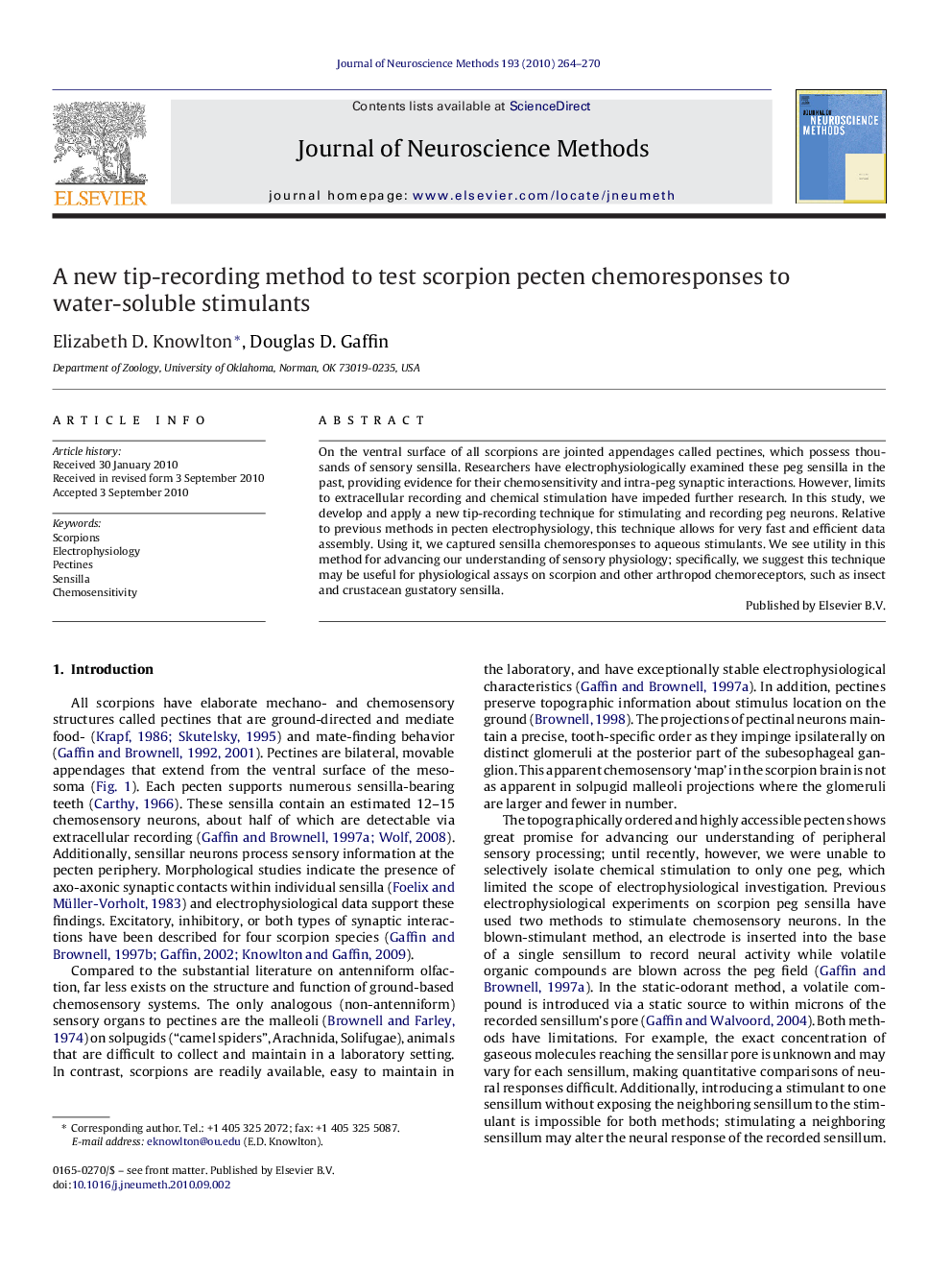| Article ID | Journal | Published Year | Pages | File Type |
|---|---|---|---|---|
| 6269917 | Journal of Neuroscience Methods | 2010 | 7 Pages |
On the ventral surface of all scorpions are jointed appendages called pectines, which possess thousands of sensory sensilla. Researchers have electrophysiologically examined these peg sensilla in the past, providing evidence for their chemosensitivity and intra-peg synaptic interactions. However, limits to extracellular recording and chemical stimulation have impeded further research. In this study, we develop and apply a new tip-recording technique for stimulating and recording peg neurons. Relative to previous methods in pecten electrophysiology, this technique allows for very fast and efficient data assembly. Using it, we captured sensilla chemoresponses to aqueous stimulants. We see utility in this method for advancing our understanding of sensory physiology; specifically, we suggest this technique may be useful for physiological assays on scorpion and other arthropod chemoreceptors, such as insect and crustacean gustatory sensilla.
Research highlightsⶠWe successfully recorded neural activity within scorpion peg sensilla using the tip-recording technique. ⶠWe were able to isolate chemical stimulation to one sensillum by combining the tip-recording configuration and the use of mineral oil. ⶠThis technique may be useful for electrophysiological assays on scorpion and other arthropod chemoreceptors.
